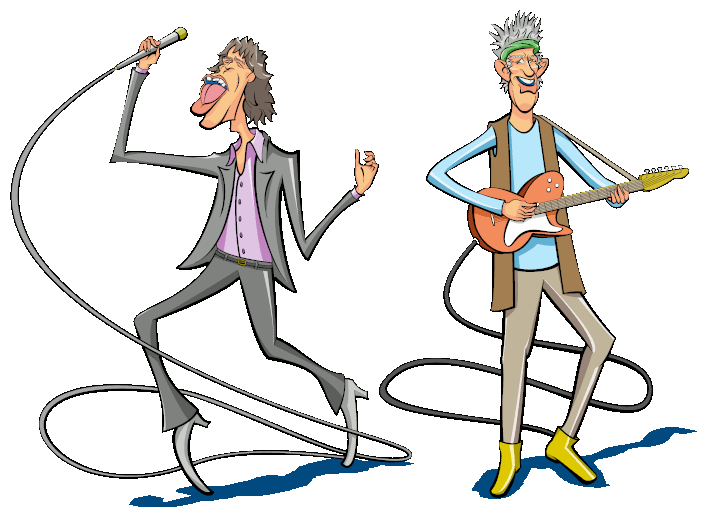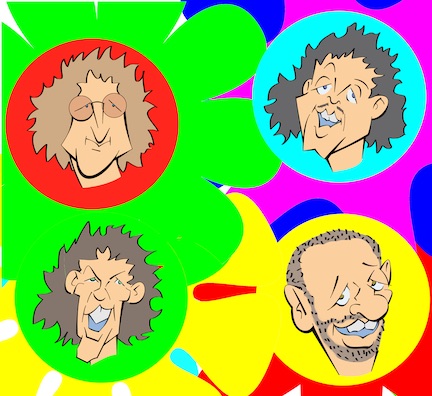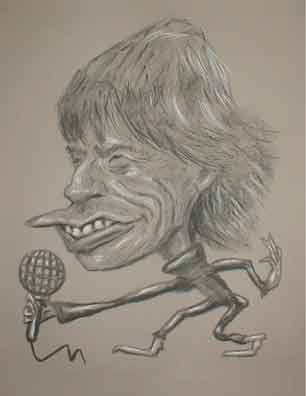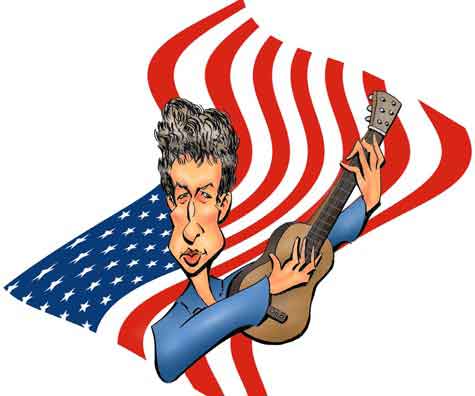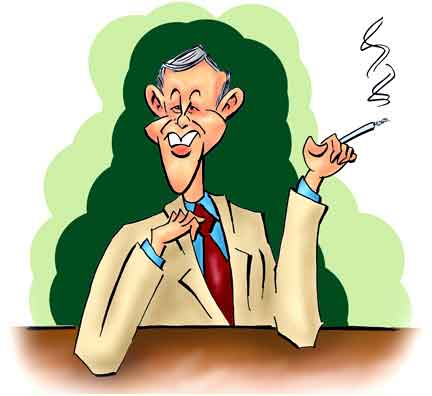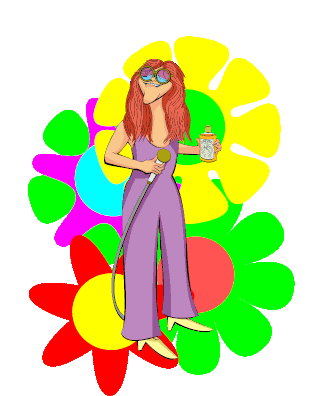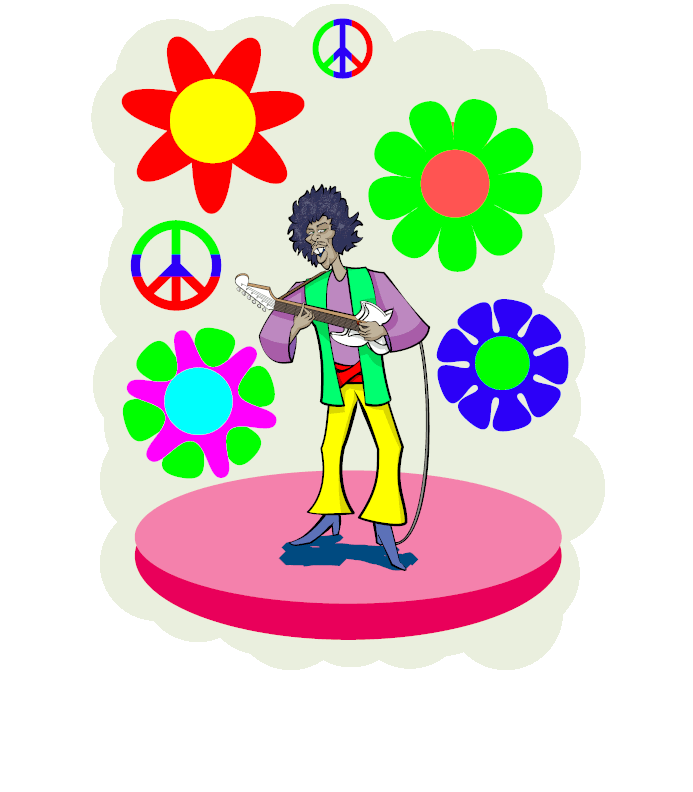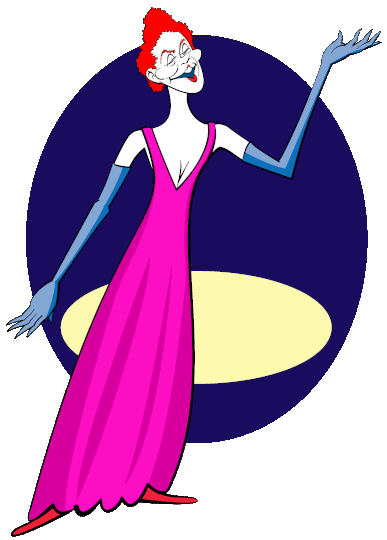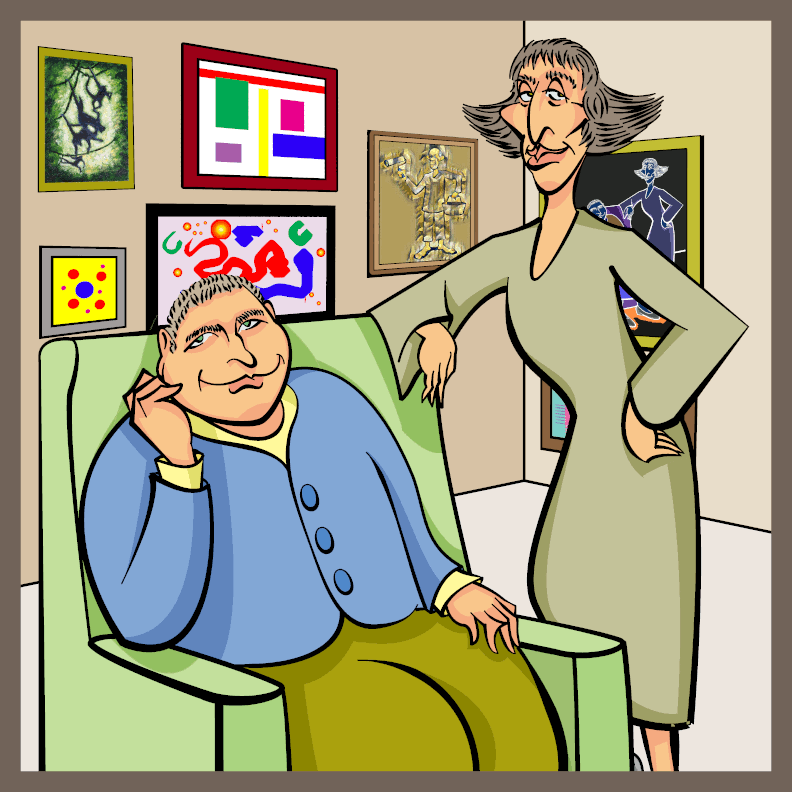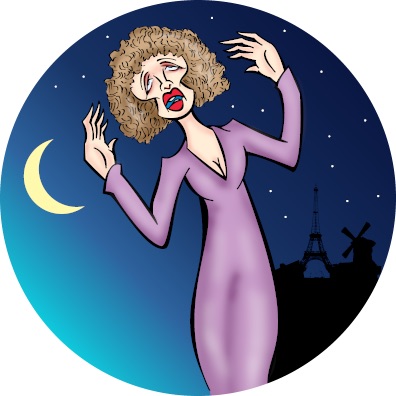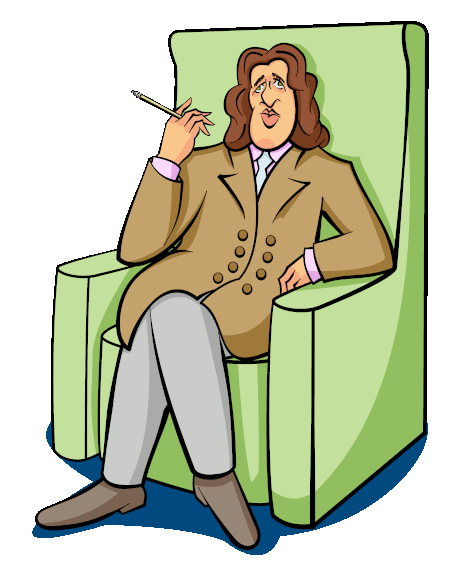Jim Morrison

(Click on the image to zoom in.)
With the Swinging Sixties came a new twist to a famous philosophical conundrum from Ancient Greece. This was the Paradox of the Rock Group.
Of course, in Ancient Greece it wasn't exactly the Paradox of the Rock Group. Instead, it was called the Paradox of the Ship. The question is about a ship that is gradually repaired to the point where the ship no longer has any of its original parts.
Is it still the same ship?
So the updated version of the paradox is about a rock group where over the years the members are replaced until none of the original members are left.
Is it still the same rock group?
Of course, there are some groups that still have one or two of the original members. Three Dog Night still features Danny Hutton while Mick Jagger and Keith Richards are still rolling along in The Rolling Stones. We can accept that these are the same groups.
But there are famous bands that are still active but have none of the original members. That's NO members. NONE! KEINS! NICHTS! These are groups like Blood Sweat and Tears ("Spinning Wheel", "You Made Me So Very Happy"), Canned Heat ("On the Road Again"), The Hollies ("Bus Stop" "[Riding along] On a Carousel" "Carrie Anne"), Iron Butterfly ("In-a-Gadda-da-Vida"), The Four Tops ("I Can't Help Myself [Sugar Pie Honey Bunch])", The Ventures ("Walk Don't Run"), and The Kingston Trio ("Tom Dooley", "[Charlie on ] The MTA").
Are these still the same groups?1
Footnote
Every now and then there may be times when one of the original band members may join the group for a specific tour. For instance there have been tours of Blood Sweat and Tears where the original guitarist Steve Katz has been part of the line up. Once the bass player Jim Fielder went along. But most of the time if you see a live performance of the band there are no original members on stage.
Steve and Jim, by the way, were part of the ORIGINAL original BS&T. Before the band was led by husky voiced singer David Clayton Thomas who put the group in the top with the hits "You Made Me Feel So Very Happy" and "Spinning Wheel", there was the first incarnation featuring Steve and Jim that was led by keyboardist Al Kooper. Their sole album release was in 1968 with the little remembered but excellent Child is Father to the Man.
But with The Doors there was a twist. Despite the undoubted ability of the other band members - keyboard player Ray Manzarek, drummer John Densmore, and guitarist Robert Krieger - the sound of The Doors was largely defined by the singing of James Douglas Morrison.
Other groups often feature vocal solos from all the band members. For instance, even though the Fab Four had two principal vocalists - Paul McCartney and John Lennon - sometimes George would step up to the mike for "Roll Over Beethoven" and "Within You Without You". Even Ringo - the "sit-down and silent" Beatle had popular solos with "Act Naturally", "Honey Don't", "With a Little Help from My Friends", and "Yellow Submarine". So departure of one member doesn't necessarily negate the group's identity.2
Footnote
Of course, originality of membership was never an issue with the Four Lads from Liverpool. They willingly disbanded the group after their album Let It Be was released in 1970. After that there were no more Beatles. Although fans kept wondering about the group getting back together this evidently was never considered seriously by the former members who all went on to have highly successful solo careers.
Not so The Doors. Even though their last album Morrison Hotel was an international hit, later albums without Jim did not sell as well as their earlier releases. It's not that the later music was bad - it was good - and the remaining members have sometimes performed together under the original name. But today stories about the Doors inevitably use the past tense, and it's as if a ship needed to be renamed because it has a new rudder. Without Jim the Doors just weren't The Doors.
So what was it about Jim's vocals? Well, for one thing he just sounded good. Jim sang in a resonant baritone with a nearly classical timbre. And unusual for rock singers, his enunciation was excellent - that is, you could understand the words. He didn't scream and bellow the lyrics nor did he slur and mumble the words like ... well, no names. No one could replace Jim's sound and that was that.
The Swinging Sixties was also the era of the Small Screen. In 1950 about 9% of American households had a television set. By 1960 this had ballooned to over 90%. So naturally by mid-decade when The Doors entered America's homes and living rooms everyone was watching.
One of the most famous performances on television was on September 17, 1967, when The Doors appeared on The Ed Sullivan Show. Ed's program was probably the most watched program at the time and he had been crucial in promoting the careers of some of the most famous singers including that of a swivel hipped ex-truck driver from Memphis.
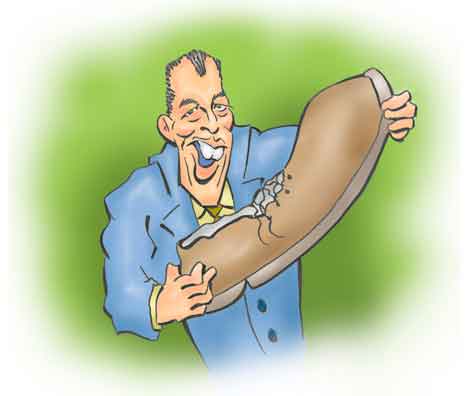
Ed Sullivan
Not on his really big shew.
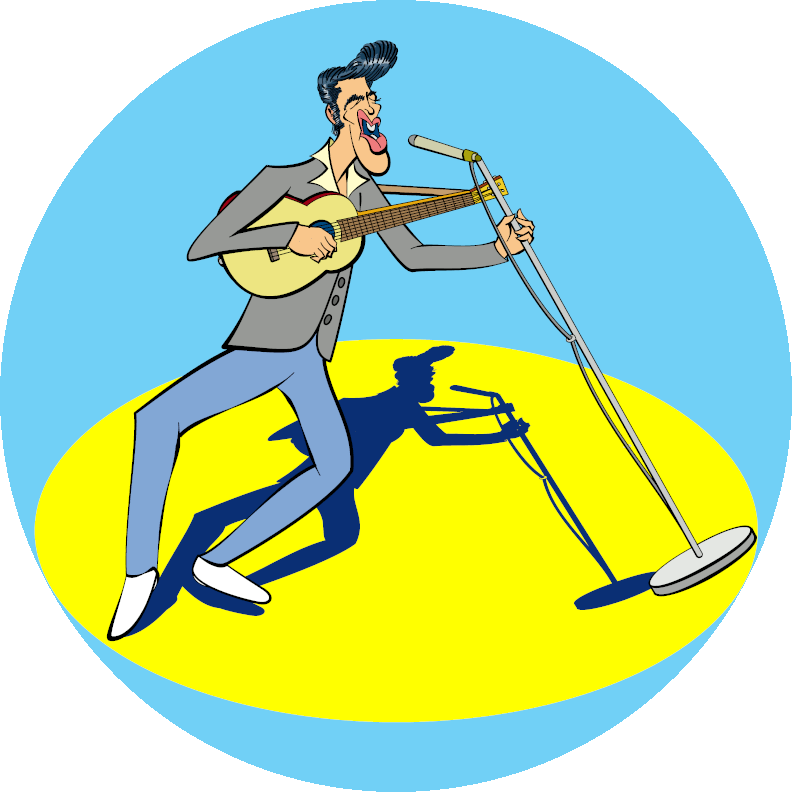
The Truck Driver
from Memphis
But Ed was notoriously sensitive to public opinion and when The Doors showed up, Ed made it clear that he wanted no references to "hippie" topics like free-love and certainly nothing about drugs. So when the group was getting ready to sing their hit "Light My Fire", Ed insisted they alter the line "Girl, we couldn't get much higher" since the word "high" had connotations to being under the influence of drugs. He wanted the lyric to be "Girl, we couldn't get much finer."
The Doors agreed, knowing full well - really big shew or not - they were going to sing the original lyrics. After the song, Ed stormed up and demanded to know what the [heck] they thought they were doing. Well, they said, you know, this was their first appearance on big time television, they were nervous, they were young and naïve, and Jim just forgot to make the lyrical switch.
Ed didn't buy it. They would never appear on his show again, he said. And they never did.3
Footnote
A similar situation arose when the Irish folk group The Dubliners were scheduled to sing on Ed's show. During rehearsal Ed heard them sing "Seven Drunken Nights" which is about a wife who strays from Traditional Irish Family Values. They were NOT singing that song, Ed said.
The group agreed and instead they sang "Muirsheen Durkin" about a man who leaves Ireland to go to America for the Gold Rush.
There was also the time a future winner of the Nobel Prize for Literature named Robert Zimmerman was going to appear. He was planning to sing his original composition "The Talking John Birch Blues" but the song was too political for Ed's tastes. Robert had to choose another song, Ed said. Rather than compromise his principals, Robert simply left the studio.
Another famous TV appearance was on The Smothers Brothers Comedy Hour on December 15, 1968. The Smothers Brothers - older brother Tom (also known as "the dumb one") and younger brother Dickie - had themselves become famous for having controversial topics and guests on their show. The Doors played two songs, "Wild Child" and what was then their current hit "Touch Me".
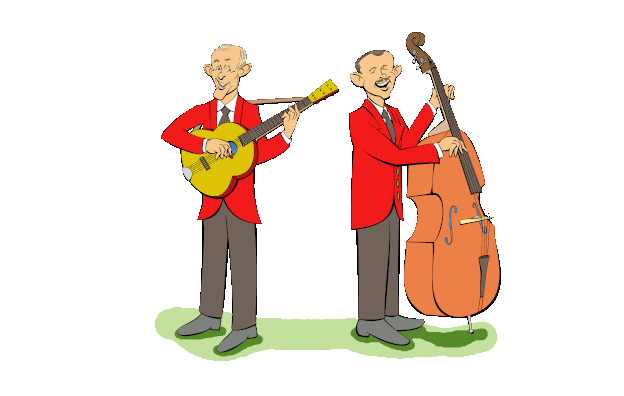
Jim's performance raised comment.
The rendering of "Touch Me" has raised some comment. When they performed "Wild Child" Ray, John, and Robert, although on camera, were kept (literally) in the dark. The only group member who was recognizable was Jim.
But when they kicked off "Touch Me", the viewers saw - you couldn't miss it - that Robert was sporting one of the most beautiful shiners you've ever seen. The details reported about what happened have varied but the usual telling was that he and Jim had gotten into an altercation with a group of men who did not approve of "hippies". Jim escaped unscathed but Robert forgot to duck.
The instrumentation was also a bit unusual for the group. "Touch Me" was written by Robert and at the suggestion of the producer the group had added a substantial orchestral backing featuring brass, strings, and a tenor saxophone. But rather than have the back-up musicians off-stage - as was common when singers appeared on The Tonight Show with Johnny Carson - they were on camera with the group. It was an effective staging, but it is a bit of an incongruity for a rock performance when most of the back-up musicians were middle aged and dressed in conservative business suits and ties. The exception was the saxophone player who was dressed in attire suitable for a jazz musician of the 60's.
But it was Jim's demeanor that seemed most amiss. He had something of a faraway look in his eyes and at one point he missed his "Come on! Come on! Come on! Come on!" cue. Although he was able to come in with the "Touch Me" lyrics in the right place, it did make one wonder if Jim had perhaps been, well, taking a break between the two numbers.
In fact Jim's performances were famous for being unpredictable. He hated the idea of going on stage and just singing the same old songs over and over. So you never knew what was going to happen.
On December 9, 1967 the group was at the New Haven Arena in Bridgeport, Connecticut. At one point Jim decided to improvise a song about him and a girl wanting to have a private conversation. So they repaired to a shower room. Then according to the song, a cop came in, accused the couple of impropriety, and hit Jim with pepper spray.
At that point, a real life policemen walked on stage. Exactly what the officer said to Jim was sotto voce and Jim offered him the microphone and according to one mainstream report he said, "Say your thing, man". But according to one of the other band members, Jim's comment was more pithy. In any case with the assistance of other officers Jim was hauled away for a "breach of the peace". At the station house the charges were upped to indecency, obscenity, and inciting a riot. He posted bail and the case was disposed of with a fine. But for the first time in history a rock musician had been arrested while performing.
One problem was that Jim could whip the audience up into a frenzy. Jim's performances had become so wild that the impresarios wouldn't let the group perform unless the band agreed that Jim kept to standards of propriety. No suggestive gestures, no questionable lyrics, and no swearing. Police officers would be in the wings with blank arrest warrants that could be filled in with appropriate violations. Even with these limitations, concert managers began canceling the shows out of concern what might happen. The other band members were also getting worried with Jim's increasing capricious behavior. Finally they decided they should stop touring and concentrate on producing studio albums.
Jim's last performance was in New Orleans, on December 12, 1970. He was not in good shape. He forgot lyrics even of their big hits. Some people in the audience said at one point Jim collapsed and couldn't - or wouldn't - get up.
After the concert the group went to the Bahamas for a rest. But while they were there, they were told that an arrest warrant had been issued for Jim for making - well, call them "improper" - actions on stage. Robert later said the accusations was horsefeathers. In fact after the concert he said that the group and the cops had sat down together for a friendly couple of beers. It was only later, Robert said, that a politician decided to push forward with charges.
But horsefeathers, poppycock, bullshine or not, Jim was tried and found guilty of improper behavior. The specific charges were serious enough that he couldn't be sure that a fine would settle the matter. Instead Jim was facing six-months in jail. Pending appeal Jim and his girlfriend went to stay in Paris.
Exactly what happened in the apartment has never been cleared up. Jim Morrison was 27 years old and so along with Janis Joplin and Jimi Hendrix he became one of the founding members of the so-called "27 Club". The official cause was "heart failure" with a contributing cause being "poor health". But many people think there's more to it than that.
Jim was buried on July 7, 1971, at Père Lachaise Cemetery in Paris alongside many luminaries of history. These include - and to skip this much abbreviated list click here: William Temple Franklin (grandson of Benjamin Franklin), artist and explorer Herbert Ward, Napoleonic era painter Jacques-Louis David, composer Paul Dukas, mathematician Pierre Simon Laplace, British admiral Sidney Smith, artist Jean-Baptiste Regnault, pointillist painter Georges-Pierre Seurat, pioneering balloonist Sophie Blanchard, soprano Jean Lucy Escott, singer Yvette Guilbert, poet and literary critic Guillaume Apollinaire, poet Henri de Régnier, versatile and prolific artist Max Ernst, Héloïse and her boy friend Peter Abelard, dancer Isadora Duncan, writer Gertrude Stein and her friend Alice B. Toklas, film director and writer Jean Rollin, jazz violinist Stéphane Grappelli, black American novelist Richard Wright, actor Yves Montand, neurologist Yvonne Sorrel-Dejerine, artist Théodore Géricault, writer Marcel Proust, linguist and decipherer of Egyptian hieroglyphics Jean-François Champollion, chanteuse Édith Piaf, painter Jean-Baptiste-Camille Corot, opera singer Maria Callas, artist and engraver Gustave Doré, singer Jane Avril, chemist Joseph Louis Gay-Lussac, mime Marcel Marceau, mathematician Pierre-Simon Laplace, writer Honoré de Balzac, writer Nancy Cunard, artist Eugène Delacroix, mathematician Sophie Germain, ballerina Elena Andreianova, composer of the opera Carmen Georges Bizet, composer and pianist Frédéric Chopin, physicist and engineer Augustin-Jean Fresnel, stage actress Sarah Bernhardt, filmmmaker Chantal Akerman, poet Stuart Merrill, painter Camille Pissarro, impressionist artist and patron Gustave Caillebotte, actress Suzanne Flon, painter Suzanne Eisendieck, architect of the Suez Canal Ferdinand de Lesseps, artist Honoré Daumier, composer Ignaz Pleyel, artist Paul Signac, mathematician Joseph Fourier, playwright Jean-Baptiste Poquelin (better known by his nom de guerre Molière), modern artist Amedeo Modigliani and his wife and artist Jeanne Hébuterne, and of course, Oscar Wilde and his friend and literary executor Robert Ross. (To return to the top of the list click here.)
Today Jim's grave is the most visited (and vandalized) memorial in the cemetery and according to some accounts because of the difficulties which now necessitates round-the-clock security guards, the cemetery management would prefer that Jim return to his native land. The next most visited grave is that of Oscar Wilde which is located a quarter of a mile northeast from Jim's sepulcher although the winding paths of Père Lachaise make the walking distance nearly twice that. Oscar's tomb has also been subjected to vandalism almost since its placement in 1909 and has had to be protected by a plexiglass barrier.
References and Further Reading
"The Myth and Mayhem of Jim Morrison’s Disastrous Final Show", Mark Beaumont, The Independent, December 11, 2020.
"The Doors' Robby Krieger on 'Touch Me' and the Lyric Jim Morrison Refused to Sing", Kory Grow, Rolling Stone, September 19, 2019.
"The Moment The Doors’ Jim Morrison Became The First Rock Star To Be Arrested On Stage", Far Out Magazine, Jack Whatley, May 31, 2020 22:00.
"Wicked Go the Doors", LIFE Magazine, April 12, 1968, p. 85-87, 89-95.
"The History of Television", Nick Vlku, Television and the Passive Consumer, Cornell University, May 7, 2002.
"The Doors", Concert Archives.
